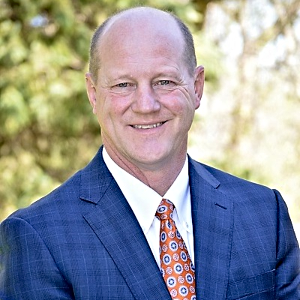
(By Rick Fink) The goal of every ad is to get people to “listen to the ad” and “recall” the ad. I refer to it as…“leaning forward”.
When visiting with a client or a potential client, I oftentimes use the Super Bowl and the ads within to make this point. I make statements or ask questions like…
“There is only one time a year when people ‘want’ to see or hear ads. Do you know when that is?”
Then I wait for their answer. Approximately 40-50% of the people will guess the Super Bowl. The others say during Black Friday or Christmas. I use this statement to get the person I am speaking with to understand “how” people consume media. Only during the Super Bowl do people actually “lean forward” to see and hear ads. The other 364 days a year, we need to actually grab their attention, because when the commercial break comes on, people “lean back”.
Being honest with them about “how” people consume media will get them to believe you and listen to you more intently as you progress through the sales process.
I also ask or suggest this…
“Do you ever wonder why a large majority of the ads during the Super Bowl are 60-second ads, and the rest of the year, these same advertisers run 30-second ads?”
So why do I make these statements? Because most business owners believe 60-second ads are “too long” and they believe “no one listens to ads”. In many cases they are right, no one likes “bad ads” and bad ads struggle to capture the listeners/viewers’ attention. To make my point, I use the Super Bowl advertisers as an example. When the money is on the line, they go with ’60s.
Aren’t the ads you run the rest of the year as important as the ad(s) you air during the Super Bowl?
I also ask this about radio stations that run 60-second promos when promoting themselves but suggest 30’s for their clients. I have never understood this!
If you’ve worked with me, you know that I’m a proponent of 60-second ads, but you also know that I believe the proper length of an ad is “whatever it takes”. A good :60, if created correctly, is better than a good :30, but a bad :60 is simply a bigger waste of money than a bad :30. (The Great Debate…10’s, 15’s, 30’s or 60’s? )
This year, in Adweek’s Top 10 Super Bowl Ads, eight were ’60s and two were ’30s. Of the approximately 21 ads that featured celebrities, twelve were ’60s, two were 60+, six were ’30s, and one was 15-seconds.
So, ask yourself this question, why don’t they do this the rest of the year?
Here are some other thoughts about Super Bowl ads:
- Whether it’s a good ad or a bad ad, the price was still $5.5 million. Because Super Bowl ads are so extremely expensive, they put their best foot/effort forward. The same is true in your market; the price is the same regardless if it’s a good ad or a bad ad. Learn to write and create better ads!
2. Your local ads are far less expensive per-person than Super Bowl ads. Do the math. For example:
Your Local Rate: $40 for a 30-sec ad
Your approximate reach: 15,000 people
Local investment per person= .26¢ (1/4 of one cent)
Super Bowl Ad Rate: $5.5 million for a 30-sec ad
Approximate Reach/Viewers: 96.4 million
Super Bowl investment per person=5.6¢ (nearly 6 cents)
3. Stories make better ads. When it comes to “branding”, stories sell. Stories are remembered far, far, longer than a basic, who, what, when, and where ad. Every business has stories, and as media reps, it’s our job to uncover and tell these stories.
4. Words and sounds are more powerful than pictures. Take the picture away from most Super Bowl TV ads and leave the words, music, and sound effects, and you still have a really strong ad.
5. Celebrities. Why? Did you recognize John Travolta? I could only name approximately 6 of over 32 celebrities featured in super bowl ads (…and who was the half-time entertainer???)
The goal should always be to do what is best for our clients. Taking a few lessons from Super Bowl ads and sharing them with your clients will help you gain their trust and help you create better ads.
Whether it’s an ad during a major event or an ad on any given week… Don’t you want people to “lean forward” every time their ad is aired?
Rick Fink is President of ENS Media USA and business partner with Wayne Ens of Ens Media Inc. Rick can be reached by e-mail at [email protected].






If nothing else, dragging Super Bowl ads into a conversation about radio does demonstrate one thing: The advantage of emotional appeal over pure content is re-established.
There is no particular need in waiting for an audience that is “leaning in”. An attention-getting commercial will suffice quite nicely. I mean, the cost of creating such spots are still negligible.
Our shame (radio’s) comes from failing to even make the attempts.
Hold on, there is a major disconnect here. The Super Bowl is, obviously, advertising’s number one showcase for the year. Millions are spent on air-time, and millions more on production. The biggest names in business hire the biggest and most talented creative professionals, from around the world, to create and show, what are essentially, mini-movies to an audience which is absolutely leaning forward to engage with these ads. Yet, despite all of that, many of them fail commercially and creatively.
Now, taking all of that in, what are the chances that a :60 created for a hardware store by a local ad agency in Des Moines (no offense) being played to an audience which is distracted and in now way “leaning in” can succeed? Not saying it can’t but, damn, that better be one heck of an ad to make any impact at all, let alone an ad without video to help cement the message.
To me, this article screams of a consultant who is pushing stations to sell :60’s as a way of moving inventory rather than as a way to improve their client’s messaging. Have at it, but comparing local radio to televised Super Bowl ads just doesn’t work.
Rick has, indeed, nailed it.
However, his premises break down when one asks the questions:
Who is going to get behind the concept?
Who is going to write, produce and perform these better ads – :30’s or :60’s?
By and large, radio has gutted the very talent pool that is necessary to address these matters.
Plus, management cringes and recoils when it realizes that taking these steps requires greater investments.
The most that can come from this is that Rick can say, “I told you so,”